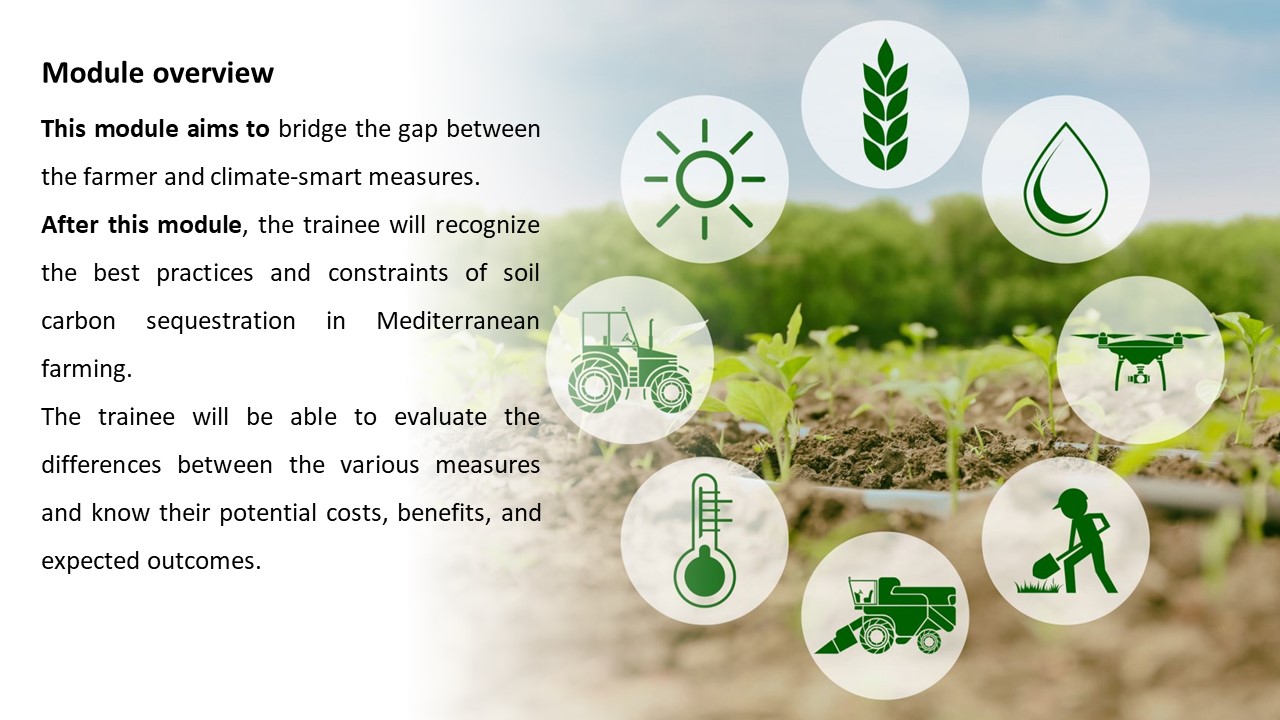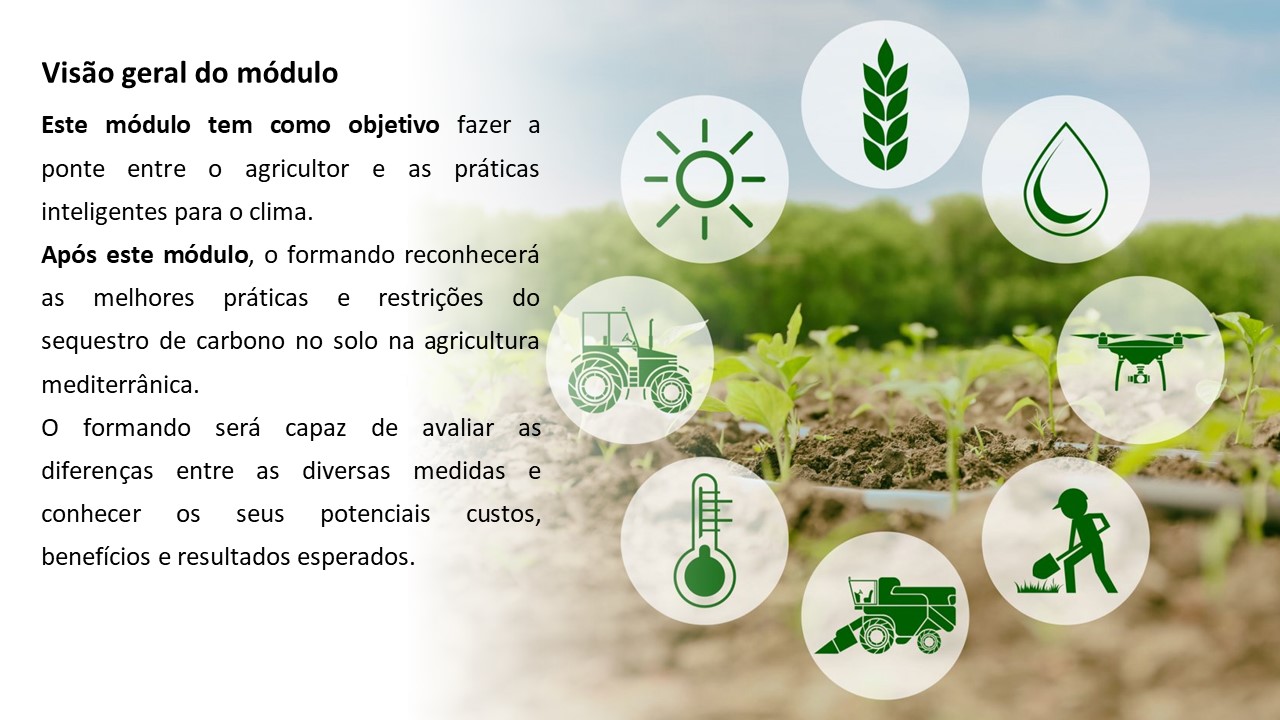

mlang} {mlang pt}

3. Applying and Analyzing Mitigation and Adaptation Tools
[1] Mitigation Tools: all those that increase the carbon content present in a given area
Adaptation tools: all those that make it possible to avoid the impacts of CC in the future (improve water retention capacity, which delay germination). Note: All adaptation measures are mitigation measures. But not all mitigation measures are adaptation (for example, those based on LULC changes that involve trees, because when you lose the productive part of the system you no longer have social value that needs adaptat
[4] Such as the olive grove that we visited in Murcia – Usage of byproducts in other phases of the production chain


mlang} {mlang pt}
